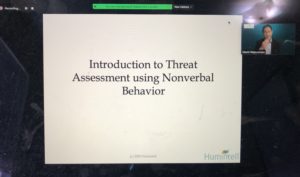What can humans learn about ourselves from studying chimpanzees?
Primatologist Frans de Waal has spent almost three decades studying the behavior and intelligence of chimpanzees. Now, he’s focused on their emotional lives–and he’s found primates and people aren’t so different in how they react to circumstances and each other. Jeffrey Brown of PBS Newshour talks to de Waal about the implications of his findings.
The post Why humans may have more in common with chimps than we thought first appeared on Humintell.
 Thanks to everyone who attended our Introduction to Threat Assessment webinar!
Thanks to everyone who attended our Introduction to Threat Assessment webinar! is a training tool that will help you identify individuals who are on the verge of dangerous actions. It is based on years of research conducted by Humintell, LLC, involving not only the general public but also law enforcement officers in different countries who have witnessed and/or been a victim of a physical assault, and remembered the face of the assailant immediately prior to the attack.
is a training tool that will help you identify individuals who are on the verge of dangerous actions. It is based on years of research conducted by Humintell, LLC, involving not only the general public but also law enforcement officers in different countries who have witnessed and/or been a victim of a physical assault, and remembered the face of the assailant immediately prior to the attack. Will you be tuning in to watch the Vice Presidential Debates tonight? A warning: don’t trust every media analyst you see or read who invokes body language.
Will you be tuning in to watch the Vice Presidential Debates tonight? A warning: don’t trust every media analyst you see or read who invokes body language.